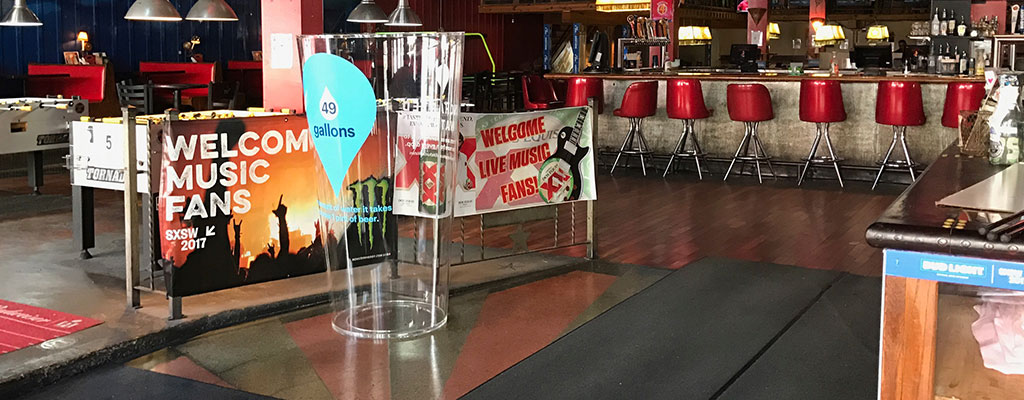Water is among our most precious resources, and arguably the hardest working, with just one percent available for human use.1 And, farmers have just 0.7 percent of the Earth’s water to feed and clothe us all.2 These numbers tell the story of farmers’ great responsibility to make sure they get the most crop out of every drop and preserve and protect our water for the future.
As a farmer-owned cooperative with a farm-to-fork view of the food and agriculture industry, Land O’Lakes, Inc. is working to identify and develop solutions for farmers to address issues surrounding water quality and quantity. Whether it’s developing technology like the R7® Tool and providing agricultural insights and products through WinField® United, or entering private-public partnerships and providing precision conservation tools and training through the Land O’Lakes SUSTAIN™ business, we continue to be at the forefront of this vital topic.
To shine light on what farmers are doing to preserve available water resources for future generations, we’re diving into uncharted waters and engaging through new partnerships, speaking in new places and reaching new people along the way.
Reaching millions with National Geographic
Every farmer knows being a good steward and a successful producer go hand in hand. To share this truth with more people, with a focus on consumers, WinField® United and Land O’Lakes SUSTAIN™ are working with National Geographic on a campaign called Uncharted Waters™.
Through National Geographic's print, digital and social media properties, the online platform will shine a spotlight on the use of water in agriculture. This includes highlighting the steps we have taken—and are committed to taking in the future—to help ensure efficiency and security of this critical resource.
Making a splash at SXSW
Speaking of uncharted waters, Land O’Lakes made its official debut at SXSW on March 11, the nation’s foremost conference on the convergence of technology and today’s culture. We brought water use in our food (and drink) to life at a local coffee shop and bar where oversized pint glasses and coffee mugs showed just how much water it takes to make our favorite beverages: 37 gallons for one cup of coffee and 49 gallons for one pint of beer.

The oversized beverage installation generated buzz for SXSW attendees and invited them to attend Uncharted Waters: The Looming Water Crisis. Our very own Teddy Bekele, vice president of IT for WinField United, and Caleb Harper of MIT Open Agriculture Initiative, took the stage to discuss the ways farmers are using technology and data to optimize water usage and how food producers are creating long-term, sustainable solutions to address the water crisis.
“Farmers have ditched the pitchfork, and now they’re using technology,” said Teddy while on stage discussing how agronomic insights and technologies help farmers optimize the use of water. “At the end of the day, profitability is driving sustainability. It’s in the best interest of the farmer to take care of that field and that’s why he does it. In that case, it’s a win-win for everybody.“
SXSW brings together diverse topics and people to enable the most unexpected discoveries, and our inaugural engagement gave us the opportunity to engage in conversation and share our industry’s story with new people.
Explore Uncharted Waters, start now
Water isn’t an issue only on the farm or in a few communities; it’s a global crisis. By bringing people together, a tenet of our cooperative business model, we know we can build understanding of the challenges ahead and create solutions together that will make a difference.
Tomorrow, on National Ag Day, head to @NatGeo on Facebook, Twitter and Instagram pages, and if you’re on Snapchat, check the Discover section, to like and share the Uncharted Waters social takeover. You can even test your water knowledge at nationalgeographic.com/unchartedwaters.
The Earth’s water glass might be 99.3 percent empty, but to a farmer, that 0.7 percent is everything. And, we’re committed to using it in the best way possible.
1. Feeding Ourselves Thirsty: How the Food Sector is Managing Global Water Risks. Accessed July 27, 2016.
2. Freshwater Crisis. Accessed July 27, 2016.